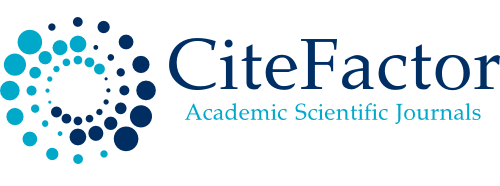Teaching Quality Mediation: Contributions to the Principal's Strategy with the Competency of Students
DOI:
https://doi.org/10.61841/dv34b379Keywords:
Leadership strategies,, student competence,, teaching quality, v, vocational schoolAbstract
The study aims to describe the influence of the principal's strategy on student competence and indirect influence through teaching quality mediation. Data is obtained from 45 vocational schools in Bandung City and analyzed by the path of analysis. The results of the research obtained the scale score of P-values strategy of the school principal towards the teaching quality of 0.210 while the indirect influence of the principal's strategy on the competency of students through the teaching quality of 0.003. Based on the P-value, it can be concluded that: 1) The principal's strategy has no significant effect on the student's competence; 2) The quality of teaching is capable of dissemination of the relationship between managerial strategies and students ' competence. As a recommendation, in formulating the principal strategy should prioritize on giving teachers the opportunity to focus more on students by reducing the administrative burden of the teaching.
Downloads
References
1. Afandi, R., & Mustajab, M. (2019). Contestation of Global Competencies: The Concepts of 3 Featured Madrasah Ibtidaiyah in Banyumas. Jurnal Pendidikan Islam. https://doi.org/10.14421/jpi.2018.72.361- 382
2. Alptekin, S. E., Pouraghabagher, R., McQuaid, P., & Waldorf, D. (2001). Teaching factory. ASEE Annual Conference Proceedings.
3. Amiron, E., & Abdul Latib, A. (2019). Industry 4.0 Skills and Enablers in TVET Curriculum.
4. Arifin, M. A., Mohd Rasdi, R., Anuar, A., & Omar, M. (2018). Competencies of Vocational Teacher: A Personnel Measurement Framework. International Journal of Academic Research in Business and Social Sciences, 7(14). https://doi.org/10.6007/IJARBSS/v7-i14/3659
5. Ballangrud, B. B., & Paulsen, J.-M. (2018). Leadership Strategies in Diverse Intake Environments. Nordic Journal of Comparative and International Education (NJCIE). https://doi.org/10.7577/njcie.2784
6. Bell, L. (2002). Strategic planning and school management: Full of sound and fury, signifying nothing? Journal of Educational Administration, 40, 407–424. https://doi.org/10.1108/09578230210440276
7. Blank, M. J., Jacobson, R., Melaville, A., & Progress, C. for A. (2012). Achieving Results through Community School Partnerships: How District and Community Leaders Are Building Effective, Sustainable Relationships. In Center for American Progress.
8. Brockmann, M., Clarke, L., Méhaut, P., & Winch, C. (2008). Competence-Based Vocational Education and Training (VET): the Cases of England and France in a European Perspective. Vocations and Learning, 1(3), 227–244. https://doi.org/10.1007/s12186-008-9013-2
9. Burch, P., & Spillane, J. P. (2003). Elementary School Leadership Strategies and Subject Matter: Reforming Mathematics and Literacy Instruction. In Elementary School Journal. https://doi.org/10.1086/499738
10. Campbell, P., Chaseling, M., Boyd, W., & Shipway, B. (2019). The effective instructional leader. Professional Development in Education. https://doi.org/10.1080/19415257.2018.1465448
11. Caswell, S. M. (2013). International school leadership: Strategies for sustainability. In ProQuest Dissertations and Theses.
12. Che Rus, R., Malik, S., Hanapi, Z., Mohamed, S., Mohammad Hussain, M. A., & Shahrudin, S. (2017). Skills and Knowledge Competency of Technical and Vocational Education and Training Graduate. Asian Social Science, 13(4), 69. https://doi.org/10.5539/ass.v13n4p69
13. Cheeseman, S., Walker, R., Corrick, G., & Reed, M. (2019). Pedagogical leadership. In Pedagogies for leading practice. https://doi.org/10.4324/9781351266925-6
14. Cremin, T., & Chappell, K. (2019). Creative pedagogies: a systematic review. Research Papers in Education. https://doi.org/10.1080/02671522.2019.1677757
15. Cunha, M. Z. B. A., & Magano, J. (2019). Principal’s Management Strategy. JOURNAL OF EDUCATION AND HUMAN DEVELOPMENT, 8, 2334–2978. https://doi.org/10.15640/jehd.v8n3a14
16. Deeboonmee, W. (2014). Relationship between Strategic Leadership and School Effectiveness. Procedia
- Social and Behavioral Sciences, 112, 982–985. https://doi.org/10.1016/j.sbspro.2014.01.1258
17. Devies, B., & Ellison, L. (2003). The New Strategy Direction and Development of The School: Key Framework for School Improvement Planning (Second). Routledge Falmer.
18. Eacott, S. (2011). Strategy and the Principal. In School Leadership and Strategy in Managerialist Times (pp. 1–7). SensePublishers. https://doi.org/10.1007/978-94-6091-657-1_1
19. Ermawati, R., & Wagiran. (2019). Profile of Vocational Learning in the Era of Industrial Revolution 4.0 (Studies at Department of Automotive Vocational High School). Journal of Physics: Conference Series, 1273(1), 0–10. https://doi.org/10.1088/1742-6596/1273/1/012015
20. Falkheimer, J., Heide, M., Falkheimer, J., & Heide, M. (2018). What is strategy? In Strategic Communication. https://doi.org/10.4324/9781315621555-3
21. Grissom, J. A., & Bartanen, B. (2019). Strategic Retention: Principal Effectiveness and Teacher Turnover in Multiple-Measure Teacher Evaluation Systems. American Educational Research Journal. https://doi.org/10.3102/0002831218797931
22. Guthrie, H., Harris, R., Simons, M., & Karmel, T. (2009). Teaching for Technical and Vocational Education and Training (TVET). In International Handbook of Research on Teachers and Teaching. (Springer I, pp. 851–864). Springer, Boston, MA. https://doi.org/10.1007/978-0-387-73317-3_55
23. Jeon, H. (2019). Teacher Efficacy Research in a Global Context. In International Handbook of Teacher Quality and Policy. https://doi.org/10.4324/9781315710068-27
24. Kannan, S. (2012). Principal’s Strategies for Leading ICT Integration: the Ma-laysian Perspective. Creative Education, 03(08), 111–115. https://doi.org/10.4236/ce.2012.38B023
25. Kinnamon, E., & Carrasco, G. (2019). Book Review - Strategic Doing: Ten Skills for Agile Leadership. American Jounral Of Enterperenuship.
26. Kjellgren, B., & Keller, E. (2019). Introducing Global Competence in Swedish Engineering Education. Proceedings - Frontiers in Education Conference, FIE. https://doi.org/10.1109/FIE.2018.8659122
27. Kurniady, DA., Komariah, A. (2018). A review of continuous professional development in school principal carrier. Opcion. Volume 34. Issue 17.
28. Kyndt, E., Janssens, I., Coertjens, L., Gijbels, D., Donche, V., & Van Petegem, P. (2014). Vocational Education Students’ Generic Working Life Competencies: Developing a Self-Assessment Instrument. Vocations and Learning, 7(3), 365–392. https://doi.org/10.1007/s12186-014-9119-7
29. Lazarides, R., & Buchholz, J. (2019). Student-perceived teaching quality: How is it related to different achievement emotions in mathematics classrooms? Learning and Instruction. https://doi.org/10.1016/j.learninstruc.2019.01.001
30. Liu, Y., & Liao, W. (2019). Professional development and teacher efficacy: evidence from the 2013 TALIS. School Effectiveness and School Improvement. https://doi.org/10.1080/09243453.2019.1612454
31. LPMP Jawa Barat. (2019). Laporan Akuntabilitas Kinerja LPMP Jawa Barat 2018.
32. Male, T., & Palaiologou, I. (2015). Pedagogical leadership in the 21st century. Educational Management Administration & Leadership, 43(2), 214–231. https://doi.org/10.1177/1741143213494889
33. Malik, M., Soenarto, S., & Sudarsono, F. X. (2018). The competency-based training model for vocational high school teachers from electrical expertise programs. Jurnal Pendidikan Vokasi, 8, 313. https://doi.org/10.21831/jpv.v8i3.19877
34. Mammadova, S., & Najafov, R. (2019). Teacher quality vs. Teaching quality. Azərbaycan Məktəbi, 686, 25–32. https://doi.org/10.32906/AJES/686/2019.01.36
35. Maulana, I., Sumarto, S., Hakim, D., & Gafar Abdullah, A. (2018). Photographic skill competency for vocational high school. IOP Conference Series: Materials Science and Engineering, 434, 12300. https://doi.org/10.1088/1757-899X/434/1/012300
36. Mazer, J. P. (2013). Associations Among Teacher Communication Behaviors, Student Interest, and Engagement: A Validity Test. Communication Education. https://doi.org/10.1080/03634523.2012.731513
37. Mulder, M., Weigel, T. M., & Collins, K. (2007). The Concept of Competence in the Development of Vocational Education and Training in Selected EU Member States: a Critical Analysis. Journal of Vocational Education and Training 59 (2007) 1, 59. https://doi.org/10.1080/13636820601145630
38. Muyiman, M. (2018). The strategy of Madrasa Ibtidaiya Principal in human resource development for increasing teachers’ professional and academic competency. MUDARRISA: Journal of Islamic Education, 10, 127. https://doi.org/10.18326/mdr.v10i1.127-147
39. Nielsen, S. (2010). Vocational Education and Training Teacher Training. In International Encyclopedia of Education (pp. 503–512). https://doi.org/10.1016/B978-0-08-044894-7.00808-3
40. Nurhadi, D., & Lyau, N.-M. (2017). A Conceptual Framework for the Development of Twenty-First
Century Vocational Teachers’ Professional Competencies. International Forum of Teaching and Studies, 13(2), 8–20.
41. Nurlatifah, S., & Kurniady, D. A. (2019). Quality of Vocational School Education in Bandung City. https://doi.org/10.2991/icream-18.2019.82
42. Nursikuwagus, A., MeLian, L., & Permatasari, D. (2018). Computational model of student competency analysis in fuzzy topsis method. IOP Conference Series: Materials Science and Engineering. https://doi.org/10.1088/1757-899X/407/1/012095
43. Putri, D. Y., & Sutarto, S. (2018). The effect of industrial work practice, guidance intensity of industrial side, and vocational competence on working readiness of grade XII students of banking program, Vocational High School Perbankan, Pekanbaru. Jurnal Pendidikan Vokasi. https://doi.org/10.21831/jpv.v8i2.18908
44. Rahman, A., Hanafi, N., Mukhtar, M., & Ahmad, J. (2014). Assessment Practices for Competency based Education and Training in Vocational College, Malaysia. Procedia - Social and Behavioral Sciences, 112, 1070–1076. https://doi.org/10.1016/j.sbspro.2014.01.1271
45. Regehr, C., Bogo, M., Donovan, K., Lim, A., & Regehr, G. (2012). Evaluating a Scale to Measure Student Competencies in Macro Social Work Practice. Journal of Social Service Research. https://doi.org/10.1080/01488376.2011.616756
46. Ribuwati, E, H., & Tobari. (2019). The Principal Leadership In Building The Students’ Character. International Journal of Scientific & Technology Research, 8, 1177–1183.
47. Roy, D., Baker, W., & Hamilton, A. (2018). Quality teaching. In Teaching the Arts. https://doi.org/10.1017/cbo9781139924504.016
48. Samani, M. (2018). Vocational Education in the Era of Industry 4.0: An Indonesia Case. Proceedings of the International Conference on Indonesian Technical Vocational Education and Association (APTEKINDO), January 2018, 4–7. https://doi.org/10.2991/aptekindo-18.2018.10
49. Skedsmo, G., & Huber, S. G. (2019). Measuring teaching quality: some key issues. In Educational Assessment, Evaluation and Accountability. https://doi.org/10.1007/s11092-019-09299-3
50. Smith, J., & Rayment, J. (2009). Developing school strategy: Developing globally fit leaders. The International Journal of Management Education. https://doi.org/10.3794/ijme.73.223
51. Tas, Y., Subaşı, M., & Yerdelen, S. (2019). The role of motivation between perceived teacher support and student engagement in science class. Educational Studies. https://doi.org/10.1080/03055698.2018.1509778
52. Vagi, R., Pivovarova, M., & Barnard, W. (2019). Dynamics of preservice teacher quality. Teaching and Teacher Education. https://doi.org/10.1016/j.tate.2019.06.005
53. Van Wyk, C., & Moeng, B. (2013). The Design And Implementation Of A Strategic Plan In Primary Schools. International Business & Economics Research Journal (IBER), 13, 137. https://doi.org/10.19030/iber.v13i1.8364
54. Wagiran, W., Pardjono, P., Suyanto, W., Sofyan, H., Soenarto, S., & Yudantoko, A. (2019). Competencies of Future Vocational Teachers: Perspective of In-Service Teachers and Educational Experts. Jurnal Cakrawala Pendidikan, 38, 387–397. https://doi.org/10.21831/cp.v38i2.25393
55. Winther, E., & Achtenhagen, F. (2009). Measurement of vocational competencies - A contribution to an international large-scale assessment on vocational education and training. Empirical Research in
Vocational Education and Training.
56. Yacob, A., Kadir, A. Z. A., Zainudin, O., & Zurairah, A. (2012). Student Awareness Towards E-Learning In Education. Procedia - Social and Behavioral Sciences. https://doi.org/10.1016/j.sbspro.2012.11.310
57. Yanto, W. (2013). Strategy Of Increasing The Competence Of Graduates Of Vocational High School (SMK) Majoring In Business And Management Based Business And Industrialized. International Journal of Research & Method in Education, 3(6), 25–30.
58. Zala-Mezö, E., Bormann, I., Strauss, N. C., & Müller-Kuhn, D. (2019). Distributed leadership practice in Swiss “eco-schools” and its influence on school improvement. Leadership and Policy in Schools. https://doi.org/10.1080/15700763.2019.1631855
Published
Issue
Section
License

This work is licensed under a Creative Commons Attribution 4.0 International License.
You are free to:
- Share — copy and redistribute the material in any medium or format for any purpose, even commercially.
- Adapt — remix, transform, and build upon the material for any purpose, even commercially.
- The licensor cannot revoke these freedoms as long as you follow the license terms.
Under the following terms:
- Attribution — You must give appropriate credit , provide a link to the license, and indicate if changes were made . You may do so in any reasonable manner, but not in any way that suggests the licensor endorses you or your use.
- No additional restrictions — You may not apply legal terms or technological measures that legally restrict others from doing anything the license permits.
Notices:
You do not have to comply with the license for elements of the material in the public domain or where your use is permitted by an applicable exception or limitation .
No warranties are given. The license may not give you all of the permissions necessary for your intended use. For example, other rights such as publicity, privacy, or moral rights may limit how you use the material.









